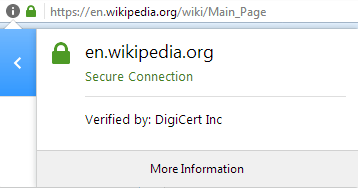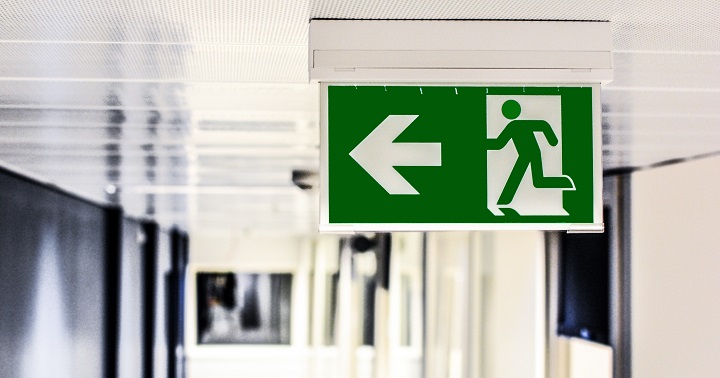HTTP Headers
What is HTTPS or HTTP Secure?
HTTPS is a secure communication protocol beyond a computer network. It is a widely used internet protocol for the World Wide Web (WWW). Transport Layer Security (TLS) or Secure Sockets Layer (SSL) are the cryptographic protocols that provide secure communications.

Table of Contents
1. What is HTTPS?
Hypertext Transfer Protocol Secure (HTTP Secure) or (HTTPS) is a secure and widely used internet communication protocol for the World Wide Web (WWW). It is the underlying network protocol beyond a computer network that enables to transfer of hypertext/hypermedia information on the World Wide Web (WWW).
The communication protocol is encrypted or encoded using Transport Layer Security (TLS), formerly, called the Secure Sockets Layer (SSL). The communication protocol is also referred to as HTTP over TLS or HTTP over SSL. The current version of the HTTP specification is called HTTP/2.
It protects against man-in-the-middle attacks, Meet-in-the-middle attacks, Session Hijacking, and SSL stripping. HTTPS connections are mainly used for secure payment transactions on the Web, e-mails, and sensitive transactions in corporate information systems (CIS).
It is recommended to use HTTP Strict Transport Security (HSTS) with HTTPS to protect users from man-in-the-middle attacks, especially SSL stripping.
The protocol’s encryption layer (SSL/TLS) certificates to service providers are Symantec, GeoTrust, Comodo, DigiCert, GoDaddy, Let’s Encrypt, GlobalSign, and Network Solutions.
See the below examples of the different SSL certificates on websites.


See the below examples of the unsecured protocols on web browsers it alerts the user when visiting sites that have invalid security certificates.
1. Warning on Google Chrome browser.

2. Warning on Mozilla Firefox browser.

Data/Information sent by using HTTPS protocol is secured via the Transport Layer Security protocol (TLS)/Secure Sockets Layer (SSL), which provides three important layers are
a) Encryption:
The exchanged (transmitting & receiving) data to keep it secure from eavesdroppers and tamperers. That means that while the user is browsing a website, nobody can “listen” to their conversations, track their activities across multiple pages, or steal or breach their data/information.
b) Data integrity:
Data integrity means the completeness, accuracy, and consistency of data, it cannot be modified or corrupted during transmitting & receiving. It protects the data against unauthorized access or corruption or modification during communication.
c) Authentication:
It protects data against man-in-the-middle attacks when users can communicate with the website, and it builds user trust, which translates into other business benefits.
2. Transport Layer Security (TLS) or Secure Sockets Layer (SSL)
Transport Layer Security (TLS) or Secure Sockets Layer (SSL) are the cryptographic protocols that provide secure communications beyond a computer network.
SSL/TLS is a secure layer protocol that makes the HTTP protocol transmit and receive activity to encrypt the data flow between the client and the server.
It will provide a secure layer between servers and web browsers. It will ensure privacy and data integrity between communicating computer network applications.

Client-server applications use the TLS protocol to communicate beyond a communication network in a way of design to prevent eavesdropping and tampering.
HTTPS encrypts and decrypts user page requests as well as the pages that are returned by the Web server.
It secures the data as traveling between the server and the client (web browsers). It comprises two protocol layers, i.e., TLS record and TLS handshake protocols.
3. Do I Need to Redirect From HTTP to HTTPS?
Yes, we just need to redirect your HTTP traffic to HTTPS, You can get into trouble with Google or other search engines if you make your site available on both HTTP and HTTPS protocols, so we need to redirect from HTTP to HTTPS and also, browsers will show a NOT SECURE message when the site is not secured by an HTTPS protocol connection.
Google announced in 2014 that having an SSL/TLS Encryption certificate will be considered a positive ranking signal.
Google prefers HTTPS sites because there tend to be faster and more secure and also increase Your user’s/visitors’ trust in the flow. It will rank higher on SERPs compared to non-secure websites.
Most of the payment Gateway companies like PayPal Pro, PayUmoney, Stripe, Authorize.net, citrus pay, Amazon Pay, etc will require you to have a secure connection before accepting payments.

4. Migrating from HTTP to HTTPS or Moving a website to HTTPS/SSL/TLS
After successfully installing the SSL/TLS certificates do the following changes for the better website
1. Rename or change all the URLs from HTTP to HTTPS on the website.
2. Add HTTP to HTTPS Redirection on .htaccess for all URLs on the website.
3. Set up HTTP Strict Transport Security (HSTS) on HTTP Headers.
4. Remove the mixed content elements on the website (Make sure to change internal links (URLs) from HTTP to HTTPS either make it to relative URLs Links on the website internal links)
5. You can also switch all related internal and external hyperlinks to HTTPS:// (start with // or HTTPS:// instead of HTTP://).
6. Update Your sitemaps with HTTPS URLs.
7. Update Your Structure data (JSON-LD scheme.org) with HTTPS URLs.
7. Make sure to add the HTTPS property to Search Console.
8. Search Console will be treated as HTTP & HTTPS site URLs separately, data for these properties are not shared in Search Console. So if you have pages in both protocols (HTTP and HTTPS), you must have to add a separate Search Console property for each one.
9. Resubmit the updated sitemaps and robots.txt on the search console and make sure Googlebot can re-index your website more rapidly after moving or migrating from HTTP:// to HTTPS:// during low-traffic hours.
10. Testing on online tools like SSL Shopper and SSL Labs

Note: If you can’t make these changes, the website will lose all the traffic on search engines when the SSL/TLS certificates are installed.
5. Where can we check if a website’s connection is secure or not?
We can check what type of SSL/TLS certificates is active on the website and also check whether it is secure or not.
To check a website’s security, to the left of the web address, look at the security status like below.
- Green Pad Lock symbol » Secure
- Information symbol » Info or Not secure
- The dangerous symbol » Not secure or Dangerous
a) Secure
If the site icon shows like the Green Pad Lock symbol tells the Data/Information transmitting and receiving are secured via HTTPS.
b) Info or Not secure
If the site icon shows like the Information symbol tells the Data/Information transmitting and receiving are secure via HTTPS, but the URL protocols are not redirecting to HTTP Secure (HTTPS).
On some sites, you can visit a more secure version of the page:
Select and enter HTTPS:// instead of HTTP:// on the web address bar and check whether the site is open in the security protocol or not if it is not working contact the website owner to ask that they secure the site and your data with HTTPS.
c) Not secure or Dangerous
If the site icon shows like Dangerous symbol that tells the Data/Information transmitting and receiving is not secure, don’t enter any private or personal information on this website or web page. If possible, don’t use the website. Why because login and payment transactions on this site are not secure at any time the hackers or attackers can attack and steal or breach the data from this un-secure protocol.
Click and check the site information on info or green padlock or dangerous icons on the left side of the address bar. It will show whether the connection is secure or not. See the below screenshot to check whether the link is reliable or not.

6. Is HTTPS safe?
Some ethical hackers try to encrypt and decrypt data in between the server and the client with or without the secure layer. So HTTPS didn’t matter at that point. In this situation, encryption can be cracked and breach the data between the server and the client.
It does not mean your data is safe through HTTPS. To say that, if you see HTTP and the little green padlock on your browser’s navigation address bar means a website is “safe” or secure. HTTPS only protects data as it travels to its client’s (web browser) destination.
HTTPS makes no guarantees as to what happens to your information once it arrives where it was going. After data securely reaches its client’s destination over HTTPS, it may or may not be stored in an encrypted manner.
There may or may not be healthy security controls preventing unauthorized access to it. There may or may not be malicious employees looking to steal your data or spy on your messages.
If you click on a link in a phishing email, it may take you to a fake version of your bank’s website. That fake site may use HTTPS, which means your information will be securely delivered to the criminals who are collecting it.

7. Most Important things to data safe
1. Use robust security certificates (HTTPS doesn’t protect your data completely, but it’s a perfect start to have SSL/TLS)
2. If you are sharing or sending the data through forms or any other ways on any websites Look clearly and confirm once the procedure.
3. Don’t save your passwords on public computer networks.
4. Check once you are opening a correct internet banking account, web URLs are not.
5. Read carefully before accepting terms and privacy
8. Avoid these common pitfalls
1. Expired SSL/TLS certificates
2. Certificate registered to an incorrect website name
3. SSL/TLS certificates installation failed errors (Improper Connection Errors)
3. Mixed security elements (Mixed Content)
4. Check whether your website returns the correct HTTP status code or not
5. Fix the Crawling issues (Don’t block your HTTPS site from crawling using robots.txt.)
6. Fix the Indexing issues (Avoid the no-index meta tag and Allows indexing of your Web pages)
7. Not Proper Use of 301/302 URL redirections.
Helpful Resources:
1. Why is Cybersecurity Important For Enterprises?
2. 5 Website Security Tips Every Employee Should Know
3. Get VPS Hosting For Your Websites For Better Results
4. Top Ten Blockchain Applications That Are Transforming Industries
5. 6 of the Best Wireless Security Cameras You Can Get
6. How to Protect WebSites Against Attackers or Hackers by using “X-Security Headers”
.htaccess File
HTTP vs. HTTPS: How to Select the Best Option for Your Website
HTTP vs. HTTPS: An HTTP is a HyperText Transfer Protocol, whereas a WWW is a World Wide Web that connects clients and servers.

Can you even imagine that a single letter could make much difference with your website ranking? Confused by what I am talking about? Straightforward, it is the HyperText Transfer Protocol.
Table of Contents
1. What so important about HTTP?
If you have noticed since 2014, Google announced that websites that hold the HTTPS on it would obtain a hike in its search ranking. You might have wondered, what would this “S” does with the website’s ranking. I would say it has a lot more than you think.
In today’s post, let us investigate HTTP vs. HTTPS and what is the best option to select the HTTPS for your website. Would you be interested to know more about it?
Let’s get started!!!

2. What is HTTP?
An HTTP is a HyperText Transfer Protocol, whereas a WWW is a World Wide Web that connects clients and servers. Now clubbing these two techniques together makes some sense. It is done by establishing a communication between the client computers and web servers by sending an HTTP request and receiving an HTTP response on the other end.
An HTTP being a stateless protocol does not save or store any of the previous web sessions. As the protocol is stateless, there is less usage of data; therefore, increasing data transfer speed. There are several other benefits of using HTTP. A few of them are as follows,
- Helps in accessing HTML pages
- Websites without confidential data use HTTP to access
- Functional and efficient
3. What is HTTPS?
The HTTPS (HyperText Transfer Protocol Secure) security is the essential thing that is very much needed these days. In recent times we face a lot of security breaches, especially when it comes to eCommerce websites, there is a lot of complaints from the customers that they have issues, or their money is stolen at the transaction. All these are referred to as security threats. In order to avoid such discrepancies, the HTTPS was introduced to ensure security among users.

4. Select the best SSL Certificate for your website
Before we could move into choosing the right SSL certificate for your website, let us investigate the types of SSL certificates that exist.
The types of SSL certificates are as follows,
- Single Domain SSL Certificate
- Multi-domain SSL Certificate
- Wildcard SSL Certificate
- Organizational Validation SSL Certificate
- The extended Validation SSL certificate
5. The Extended Validation SSL certificate (EV-SSL)
The Extended Validation SSL Certificate promises you with the highest level of security to your website and the most top validation done by a Certificate authority. The brand that involves the certificate will have to undergo a rigorous background check and various confirmation process in order to get it validated.
To be more authentic, EV-SSL is the best form of security and a cost-effective certificate that can be added to your website.
Benefits of having an EV-SSL Certificate:
- EV SSL is intended to obviously convey the dependability of the site to its users by offering a green bar that assures client certainty.
- EV decreases cart abandonment and improves client conversions. You get higher revenue per exchange and higher lifetime client esteem.
- Demonstrates your site has passed similar security checks as the other significant sites.
- It isn’t merely the best SSL certificate for WordPress and the best SSL certificate for internet business yet for every single other sort of site.
- Most elevated SSL security levels – 2048-bit digital signatures all through the whole certificate bind and up to 256-bit encryption as standard.
6. Organizational Validated SSL Certificate
Organizational Validated SSL certificate ensures high-level web security. The OV-SSL certificate adds up validation of the complete business details, which includes name, address, domain name, and any other sensitive information of the website holder.
The installation of an OV-SSL certificate to your domain shows a green padlock symbol at the front. The certificate provides warranty assurance and 100% security with secure data encryption.
Especially when it comes to eCommerce websites, a customer can be hassle-free on noticing the HTTPS on the address bar as it ensures the sign of security to its customers.

7. Domain Validated SSL Certificate
A domain validated SSL does not authenticate or validate business information. The certificate still ensures high-level security, but low level of validation compared to EV and OV SSL.
8. Single domain SSL Certificate
The single SSL certificate allows a customer to secure only a single domain/sub-domain on one single certificate. The single-domain SSL certificate ensures strong security against data theft and security breaches.
A single-domain SSL certificate can be used to protect a single domain, individual sub-domain, hostname.
There are other cheap SSL certificates that can help you protect your website from security breaches. They are as follows,
- Multi-domain SSL certificate
- Wildcard SSL certificate
- Unified Communications certificate
9. Why do you need an SSL certificate for your website?
On the off chance, you need to demonstrate your character and authenticity to your site users; at that point, you certainly need to add an SSL certificate to your site. SSL security is, for the most part, used to protect clients’ data. In this way, they are must for website pages if,
- You’re selling something on the web (you are assuming acknowledgment card, standardized savings numbers, and some other individual information during the request procedure).
- You are enabling clients to make accounts with your organization.
- Your site is encouraging login and enrollment options.
- You are accepting clients’ data, reports, and photographs by means of the form(s).
- You give secure administrations like web banking and online email (where complete protection is required).
10. Wrap up:
The most valuable thing you need to know about website security is portrayed in this post. This helps you to have a better understanding of HTTP, HTTPS, and the importance of having an SSL certificate for your website and your online business.
The different types of SSL certificates are mentioned above for your convenience that you may choose the right one for your business. Finding the cheapest SSL certificate and an authentic one would never be a typical task for you. Install the best certificate for your online business and skyrocket your business with trust and authenticity.

 Instagram3 years ago
Instagram3 years agoBuy IG likes and buy organic Instagram followers: where to buy them and how?

 Instagram3 years ago
Instagram3 years ago100% Genuine Instagram Followers & Likes with Guaranteed Tool

 Business5 years ago
Business5 years ago7 Must Have Digital Marketing Tools For Your Small Businesses

 Instagram4 years ago
Instagram4 years agoInstagram Followers And Likes – Online Social Media Platform





















